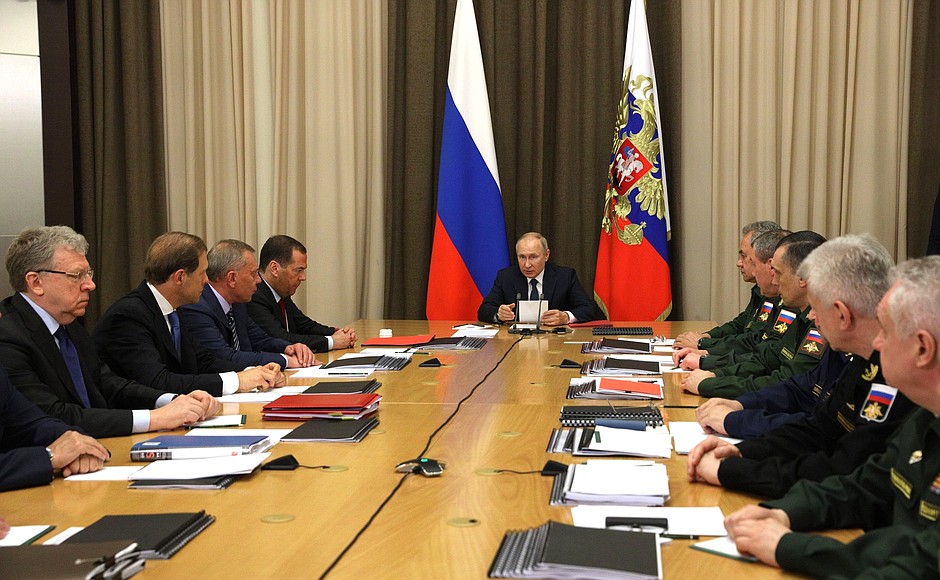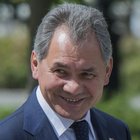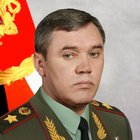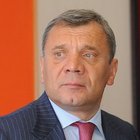The meeting was attended by Defence Minister Sergei Shoigu, Head of the General Staff – First Deputy Defence Minister Valery Gerasimov, Deputy Defence Minister Alexei Krivoruchko, Commander-in-Chief of the Aerospace Forces Sergei Surovikin, Commander-in-Chief of the Navy Nikolai Yevmenov, First Deputy Chief of the Main Operational Directorate of the General Staff Viktor Poznikhir, Head of the 3rd Department of the Main Operational Directorate of the General Staff Andrei Sterlin, and Head of the Directorate of Cross-Branch Research at the Main Operational Directorate of the General Staff Yevgeny Shmyrin. Other officials invited to the meeting included Deputy Chairman of the Security Council Dmitry Medvedev, Deputy Prime Minister Yury Borisov, top officials from the Ministry of Industry and Trade, the Finance Ministry, the Accounts Chamber, the Military-Industrial Commission, the Federal Service for Technical and Export Control, and the state corporations Roscosmos, Rostec and Rosatom, as well as the United Shipbuilding Corporation and the United Aircraft Corporation.
* * *
President of Russia Vladimir Putin: Good evening, colleagues.
Today we will continue our work and discuss the implementation of the state defence order.
We realise that the coronavirus epidemic has seriously influenced the economy. We have just spoken about this with our colleagues from the Government. Defence industry companies have also faced serious problems, although we supported them just as we did the civilian sectors of industry. Timely measures allowed us to preserve a sustainable work pattern in all production processes and the required pace for conducting research, launching production, and for upgrading and repairing arms and combat hardware. As a result, last year, state defence order contracts were 99.8 percent fulfilled. This is a good figure.
Note that it is important to continue supplying troops with advanced weapons and equipment precisely as scheduled. This primarily applies to arms and equipment with long-term technological production cycles. I am mainly referring to combat hardware for the Aerospace Forces and the Navy. Yesterday we discussed supplying the other branches of the service, which have received many high-tech systems.
It is necessary to observe the deadlines specified in the state contracts on completing and upgrading 20 surface warships for the off-shore maritime zone, and supplying the Aerospace Forces with 145 new and upgraded aircraft.
I would like to ask you to discuss separately the issues related to increasing the potential for the orbital group of military and dual-purpose spacecraft and supporting the Armed Forces with space systems and complexes.
In addition, we will discuss the development of priority arms systems that are based on science-intensive technology with artificial intelligence elements. I refer, in part, to laser and hypersonic systems and, of course, also to robotics. Yesterday my colleagues and I saw how this can work in practice.
Let us get to work.
<…>





